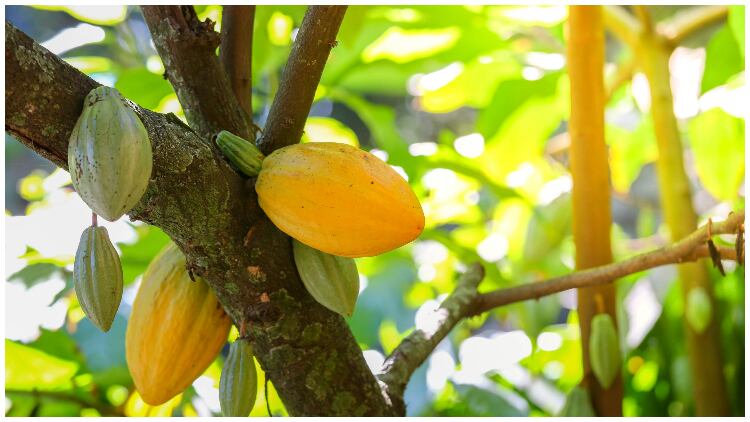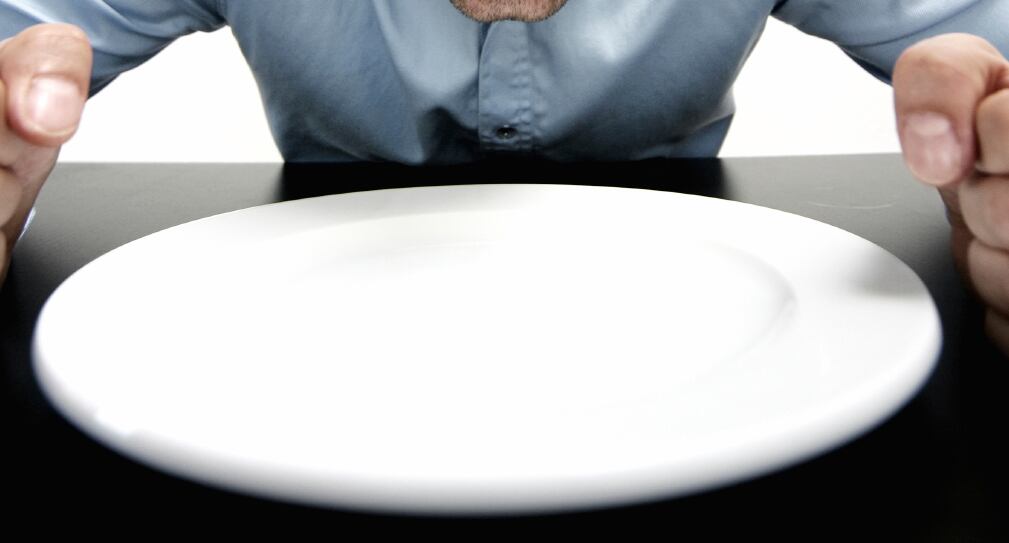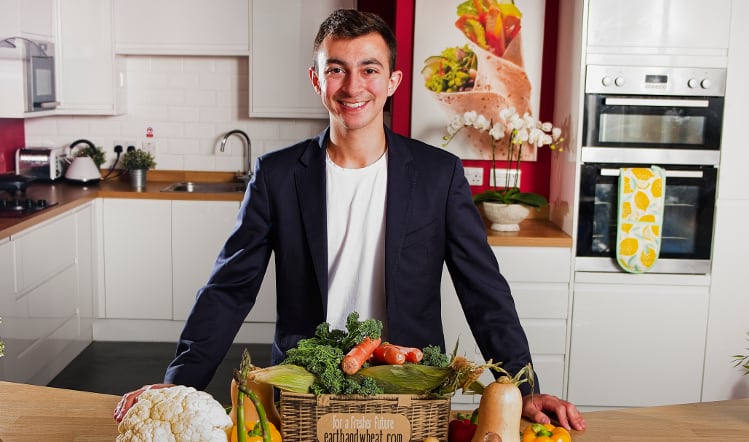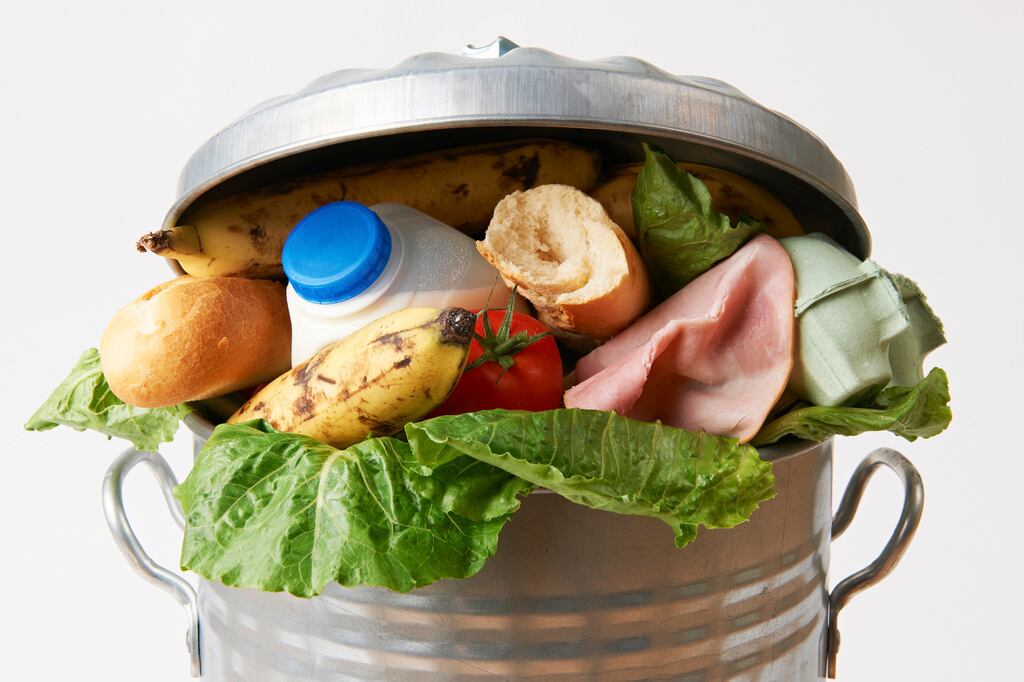The food system is broken. Globally, we throw away 30% of all food, 50% of all fruit and vegetables, and 70% of all cacaofruit, making it one of the most wasted fruits on the planet
But there is a solution. We believe that upcycling 100% of raw materials and ensuring nothing goes to waste is a conscious way of tackling the ever-growing concern of food waste in the supply chain.
For example, 70% of the cacaofruit is traditionally discarded and left to rot once the seeds (which represent 30% of the fruit) have been harvested for chocolate production.
Cabosse Naturals, a brand from Barry Callebaut, has begun upcycling the rest of the fruit into a range of natural and 100% pure ingredients - juice, pulp, powder and concentrate - which can be used in food production.
Waitrose is already streets ahead in the UK, having launched its No 1 WholeFruit chocolate bar in September, made from one single ingredient: 100% pure cacaofruit. Kayu - another plant-based brand - has also seen the benefit of cacaofruit, launching an energy drink in the UK. Several other UK releases are expected to follow suit.
Why and how are we wasting cacaofruit?
Annually, about 14 million tonnes of cacaofruit are harvested around the world, yet as much as 10 million tonnes have been wasted. But how does this wastage impact the supply chain and where does the wastage take place?
For the cacaofruit, it’s at harvest.
The cacaofruit journey
The cacaofruit journey starts in farms based in tropical regions around the Equator. Once ripe, it’s harvested by hand, cleaned and opened to remove the seeds, or beans, from the fresh, white pulp.
The pulp is pressed into juice to preserve the fresh aromas of the fruit. Afterwards, the cacaofruit juice is filtered and gently pasteurised. The juice is then reduced to obtain the cacaofruit concentrate.
The juice has a unique zesty fruitiness, making it a refreshing fruit base for a large range of beverages, including ready to drink teas and coffees. It has a light yellow colour with a fruity scent and naturally contains magnesium, potassium and antioxidants, and brings an exotic flavour to drinks.
Characterised by its golden brown colour and a fruity honey scent, the juice concentrate is 100% pure and free from sweeteners, additives and preservatives. It adds an intense fruity sweetness and a unique signature flavour wherever used.
Like other fruits, the cacaofruit needs careful handling to preserve its fresh taste and natural goodness, from the moment of harvesting until the end product. However, making this possible in industrial quantities is a big challenge; Cabosse Naturals has been able to master this because of the unique know-how from harvest to processing, and integrated value chain set-up.
To preserve the taste and nutrients of the fruit, the whole process needs to take place in a few hours. Cabosse operates within a short window of four hours between the moment the fresh cacaofruit has been harvested and the pulp is crafted into a range of 100% pure cacaofruit ingredients.
This is key to meet the unique specifications of a high quality range of cacaofruit ingredients consistently and at scale.
The impact of upcycling cacaofruit
If all harvested cacaofruit was used to its fullest, it would reduce the same amount of CO2 as planting 3.5 billion trees per year. That’s an area bigger than France and Germany combined.
All food manufacturers can play their part in helping to tackle the issue of food waste and it is important to understand the potential value of ingredients that are part of end product, to see what the by-products are or could be, and where, when and why certain waste takes place, as well as what the solutions are to solve that issue.
Interested in hearing about the novel ways food and drink manufacturers are reducing their waste? Watch our FREE virtual panel here.
Being part of Barry Callebaut, we are committed to having 100% sustainable ingredients in all of our products by 2025 as part of our Forever Chocolate strategy. That means everything from cocoa to vanilla, from sugar to nuts; each and every ingredient in the products we sell. But it goes further than that...we’ve partnered with The Upcycled Food Association, a non-profit organisation that focuses on reducing food waste by developing the upcycled food economy. Together, we contribute to this movement by developing a low waste supply chain of the upcycled cacaofruit.
It’s essential for consumer brands to invest in sustainability for long-term success as recent studies show that about 60% of consumers want to buy more upcycled food.
By providing the Upcycled Certified™ on the packages on your products, we make it easy for consumers to participate in the upcycled food movement and make an impact with every purchase decision.




